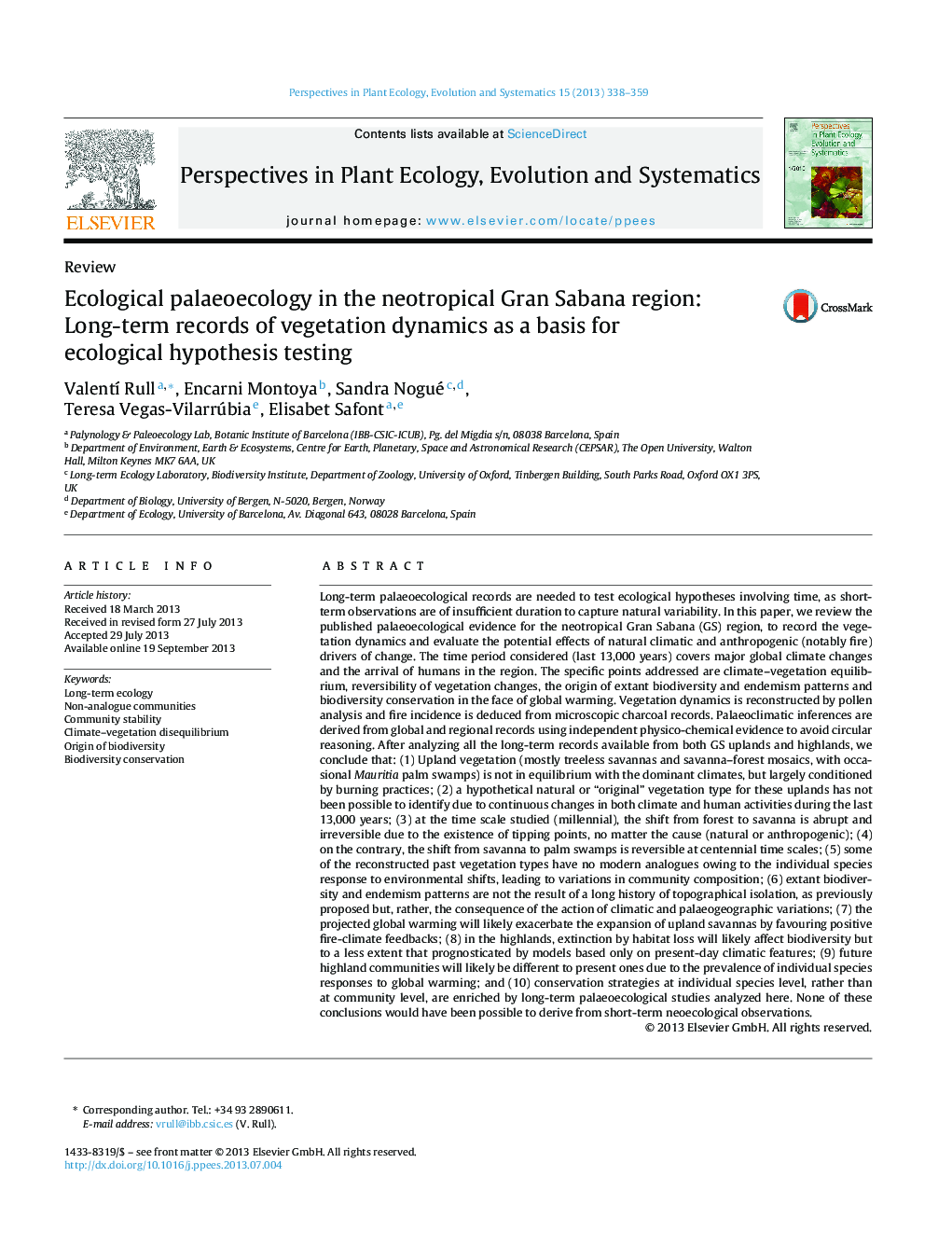| کد مقاله | کد نشریه | سال انتشار | مقاله انگلیسی | نسخه تمام متن |
|---|---|---|---|---|
| 4401013 | 1307045 | 2013 | 22 صفحه PDF | دانلود رایگان |

Long-term palaeoecological records are needed to test ecological hypotheses involving time, as short-term observations are of insufficient duration to capture natural variability. In this paper, we review the published palaeoecological evidence for the neotropical Gran Sabana (GS) region, to record the vegetation dynamics and evaluate the potential effects of natural climatic and anthropogenic (notably fire) drivers of change. The time period considered (last 13,000 years) covers major global climate changes and the arrival of humans in the region. The specific points addressed are climate–vegetation equilibrium, reversibility of vegetation changes, the origin of extant biodiversity and endemism patterns and biodiversity conservation in the face of global warming. Vegetation dynamics is reconstructed by pollen analysis and fire incidence is deduced from microscopic charcoal records. Palaeoclimatic inferences are derived from global and regional records using independent physico-chemical evidence to avoid circular reasoning. After analyzing all the long-term records available from both GS uplands and highlands, we conclude that: (1) Upland vegetation (mostly treeless savannas and savanna–forest mosaics, with occasional Mauritia palm swamps) is not in equilibrium with the dominant climates, but largely conditioned by burning practices; (2) a hypothetical natural or “original” vegetation type for these uplands has not been possible to identify due to continuous changes in both climate and human activities during the last 13,000 years; (3) at the time scale studied (millennial), the shift from forest to savanna is abrupt and irreversible due to the existence of tipping points, no matter the cause (natural or anthropogenic); (4) on the contrary, the shift from savanna to palm swamps is reversible at centennial time scales; (5) some of the reconstructed past vegetation types have no modern analogues owing to the individual species response to environmental shifts, leading to variations in community composition; (6) extant biodiversity and endemism patterns are not the result of a long history of topographical isolation, as previously proposed but, rather, the consequence of the action of climatic and palaeogeographic variations; (7) the projected global warming will likely exacerbate the expansion of upland savannas by favouring positive fire-climate feedbacks; (8) in the highlands, extinction by habitat loss will likely affect biodiversity but to a less extent that prognosticated by models based only on present-day climatic features; (9) future highland communities will likely be different to present ones due to the prevalence of individual species responses to global warming; and (10) conservation strategies at individual species level, rather than at community level, are enriched by long-term palaeoecological studies analyzed here. None of these conclusions would have been possible to derive from short-term neoecological observations.
Journal: Perspectives in Plant Ecology, Evolution and Systematics - Volume 15, Issue 6, 20 December 2013, Pages 338–359